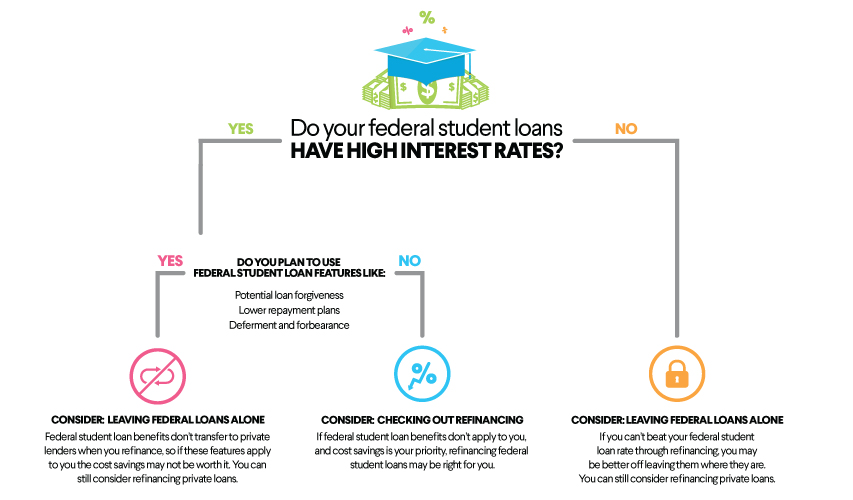Everything You Need to Know About No Credit Check Loans
Quick loans for bad credit can look mighty attractive. However, products like payday loans and auto title loans can have major drawbacks, including short repayment periods and sky-high interest rates.
In fact, short-term loans can be so expensive that borrowers often end up paying exponentially more than they would if they’d financed the purchase some other way. And many loan holders end up re-borrowing, starting a vicious cycle that can quickly spin out of control.
So when you need money now, what should you watch out for — and what are some savvier alternatives to predatory loans? In this article, we’ll lay it all out.
What Are No Credit Check Loans?
No credit check loans, as their name implies, are loans that offer quick cash to borrowers without requiring a credit check. This means the lender doesn’t review your credit history or credit score when deciding whether to give you a loan. However, not requiring a credit check makes these loans risky for the lender, which is part of how they can justify high interest rates and fee schedules.
And when we say high, we mean high. It’s not hard to find payday loans with effective interest rates of about 400%, and sometimes they go much higher.
Recommended: What Is Considered a Bad Credit Score?
Awarded Best Personal Loan by NerdWallet.
Apply Online, Same Day Funding
No Credit Check Loans: Borrower Beware
Rather than a set interest rate, payday loans will often charge $10 to $30 for every $100 borrowed. If a payday lender charges $15 for a $100 two-week loan, that’s the equivalent of a 391% APR.
Here’s how those numbers can work out when it comes to real money. If a payday lender charges $10 for every $100 borrowed, you would owe $50 in interest for a $500 loan, and the $550 would be due on your next payday. If you are unable to repay the loan in full when it’s due, you will typically get hit with a fee, and then the cycle repeats itself. After a few months of rollovers, you can end up owing more in interest than the actual loan amount.
Another word to the wise: The fine print on short-term predatory loans can include a variety of fees, including change fees, mandatory subscription charges, and early repayment fees. These fees can quickly add up. On average, borrowers end up paying $520 in fees on a two-week payday loan for $375.
It’s clear to see how these loans, though small in size, can lead to big financial problems. Even under the best of circumstances, it can be difficult to get ahead of short repayment terms and steep interest rates and fees.
Recommended: What is Consumer Debt?
Who Offers No Credit Check Loans?
Two of the most common types of these no-credit check loans are payday loans and auto title loans.
• Payday loans As you might have guessed, payday loans are designed to be repaid on the borrower’s next payday — generally within two to four weeks. Because payday loans do so often carry predatory interest rates and terms, some states have limited the size and interest rate of payday loans, but even small loans with lower interest rates can lead to financial trouble.
• Auto title loans Also referred to as “title loans,” these are another common type of short-term personal loan that doesn’t require a credit check. In the case of a title loan, the borrower gives the lender the title of their car as collateral for a cash loan of up to about 50% of the value of the car. The borrower is still allowed to drive the car, but the loan principal plus interest is generally due within 30 days — again at astronomical rates. If the borrower is unable to pay the loan, they risk having their car repossessed.
Other lenders offer similar types of short-term, high-interest rate personal loans, sometimes advertising online loans with “no credit check required” or “guaranteed loan approval.”
Even if they aren’t called payday loans or title loans, borrowers would be wise to pay attention to the loan’s terms and conditions, particularly interest rates, fees, and expected repayment schedules.
Generally speaking, too-good-to-be-true financial products are often just that. Staying informed about the full implication of the loan’s terms and doing the math to work out how much you will end up paying over time can help borrowers avoid a potentially disastrous financial situation.
Recommended: Can You Get a First-Time Personal Loan With No Credit History?
Alternatives to No Credit Check Loans
As financially harmful as no check credit loans can be, there still might be instances in which borrowers need quick access to money. Fortunately, there are some alternatives worth consideration.
For starters, borrowers might turn their attention to why they need the money in the first place. Short-term loans are often taken out to repay existing debt, an approach that might result in the borrower going even further into debt to try to scramble out of the hole.
In this scenario, attempting to negotiate the existing debt with current lenders might be a better tactic. Sometimes, credit card issuers and other lenders might offer repayment options to ease the immediate financial burden. It’s a tactic that’s worth asking a creditor about.
Another option: borrowing from friends and family. While this can come with its own set of pitfalls, family loans are unlikely to create the same kind of debt spiral short-term cash loans might.
In order to keep things friendly, you’ll want to set out a formalized loan agreement with interest rates and terms, similar to what you’d expect to sign for a traditional loan from a financial institution. This avoids any confusion and helps keep the transaction as objective as possible.
Credit unions are another source of small-dollar, payday loan alternatives — and importantly, credit unions are subject to a federal interest rate cap and other limits that keep these loans from becoming exorbitantly expensive.
And although they’re generally not an ideal solution, credit cards may carry lower interest rates than short-term cash loans. Some borrowers might also be able to utilize a promotional 0% interest rate period in order to aggressively pay off debt during the promotional period without paying interest.
Another alternative is a traditional personal loan from an online lender. While these loans usually do require a credit check and specific approval requirements, some online lenders will extend loans to applicants with imperfect credit histories. Rates are typically higher. However, they likely won’t be nearly as high as payday loans. You may be able to get a better rate by applying for a secured personal loan (which requires using an asset as collateral) or including a co-applicant on the loan agreement.
The Takeaway
While no credit check loans can certainly be attractive, their high interest rates and associated fees can make them costly over time. Borrowers may not be able to repay the loans plus interest in the short repayment term required, which could lead to a debt treadmill scenario and, possibly, negative credit history consequences.
If you’re interested in exploring other personal loan options, SoFi could help. SoFi’s unsecured personal loans come with competitive, fixed interest rates and there are no fees required. Checking your rate will not affect your credit score.
Photo credit: iStock/FG Trade
SoFi Loan Products
SoFi loans are originated by SoFi Bank, N.A., NMLS #696891 (Member FDIC). For additional product-specific legal and licensing information, see SoFi.com/legal. Equal Housing Lender.
Checking Your Rates: To check the rates and terms you may qualify for, SoFi conducts a soft credit pull that will not affect your credit score. However, if you choose a product and continue your application, we will request your full credit report from one or more consumer reporting agencies, which is considered a hard credit pull and may affect your credit.
SOPL0523008





